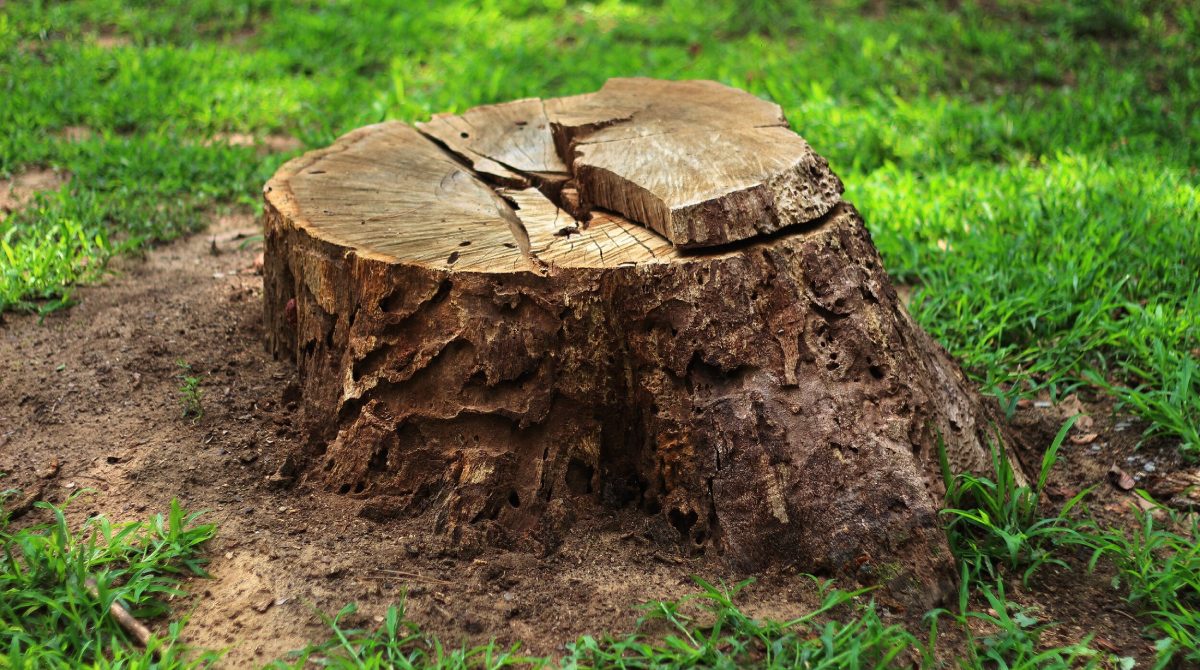So, you’ve just had a stump ground out of your garden, and now you’re itching to replant something beautiful in its place. But hold on! Planting right after stump grinding might sound like the logical next step, but rushing into it could spell disaster for your new plants. Let’s explore the expert advice to ensure your replanting efforts thrive rather than flop.
Key Points
- Why timing matters after stump grinding.
- How to prepare the soil post-stump grinding.
- Expert tips for choosing the right plants after stump removal.
Why You Can’t Plant Immediately After Stump Grinding
After a stump has been ground down, the temptation to fill that empty spot in your garden with a fresh plant is real. But there’s a catch—lots of them, in fact. Leftover roots, wood chips, and sawdust from the grinding process can create an environment that’s far from ideal for new plant life.
Those wood chips may look harmless, but as they break down, they consume nitrogen from the soil, depriving your new plants of one of their essential nutrients. Plus, the soil around the grinding site can be compacted and full of organic debris, making it tough for young roots to establish themselves.
Before you plant anything, you need to give the soil time to breathe and recover from the stump removal. Trust us, the last thing you want is for your new plants to struggle due to poor soil quality.
How to Prepare the Soil After Stump Grinding
You’ve ground out that old stump—now what? Before you even think about planting, you’ve got some soil prep to do.
- Remove Wood Chips
The first step is clearing out as many wood chips and chunks of stump as possible. These can not only stunt plant growth but also lead to soil settling issues over time. - Check the Soil pH
Stump grinding can leave the soil more acidic, which isn’t ideal for most plants. Use a soil test kit to check the pH and, if needed, add lime to balance it out. - Amend the Soil
Now it’s time to boost the quality of your soil. Mix in organic compost or well-rotted manure to improve the structure, drainage, and nutrient content. This will help your new plants get the healthy start they deserve. - Aerate the Soil
Stump grinding compacts the soil, so loosen it up with a garden fork or tiller. This will improve drainage and make it easier for new roots to spread.
Ideal Waiting Time: How Soon Can You Actually Plant?
Now for the big question: how soon after stump grinding can you plant? The short answer is: it depends on how much prep you’re willing to do.
If you’ve removed most of the wood chips, amended the soil, and given the area a good tilling, you can generally plant within 3 to 6 months. This gives the leftover organic material time to break down and ensures your soil has regained enough nutrients.
For larger stumps or if you didn’t do much soil prep, you may need to wait up to a year before planting. The bigger the stump, the more material there is to decompose, which can take a while. In areas with colder climates, decomposition can be even slower.
Expert Tips for Replanting After Stump Grinding
Once your soil is ready, choosing the right plants is key to ensuring successful replanting. Not all plants will thrive in soil that’s recently had a stump removed, so here are some expert suggestions.
- Best Trees for Replanting
If you’re thinking of planting another tree where the stump was, consider smaller or slow-growing species that won’t compete with any remaining roots. Birch, dogwood, and maple are great choices as they adapt well to varied soil conditions. - Flowers and Shrubs
For flowers, go with hardy species like daylilies, black-eyed Susans, or coneflowers. These tough plants can handle slightly poorer soil while still delivering colour and beauty to your garden. - Ground Cover Plants
Ground covers like creeping thyme or sedum can help stabilise the soil and add visual appeal while you wait for larger plants to take root. - Nurture Your Soil
Once planted, feed the soil with a slow-release fertiliser to keep it enriched and healthy. Mulching around your new plants can also help retain moisture and prevent the soil from drying out.
Avoiding Common Replanting Mistakes
When it comes to replanting after stump grinding, patience and planning are key. Here are some pitfalls to avoid:
- Planting Too Soon
We’ve already covered this, but it’s worth repeating. Planting too early will almost certainly lead to poor plant health. Let nature do its thing first! - Ignoring Soil Settling
The area where the stump was ground will likely settle over time. Make sure to regularly check and top up the soil level to avoid sinking plants. - Choosing the Wrong Spot
If the ground is still loaded with roots or debris, don’t plant directly in the same spot where the stump was. Shift your planting area a bit to ensure a fresh start.
Grandma Gardens: Your Go-To for Expert Gardening Advice
At Grandma Gardens, we know how important it is to get the timing right when replanting after stump grinding. With years of experience in all things gardening, we offer tips, tricks, and expert advice to ensure your garden flourishes. Whether you need help with soil preparation or plant selection, we’ve got you covered. Check out our gardening services or explore more tips by visiting Grandma Gardens.
Conclusion
Replanting after stump grinding isn’t a simple case of digging a hole and dropping a plant in. It requires some patience and soil preparation to ensure that the new plants will thrive. Give the soil enough time to recover, remove any remaining debris, and choose the right plants for the job.
For more gardening advice and support, trust Grandma Gardens—your local expert in all things green!
FAQs
- How do I know if the soil is ready for planting after stump grinding?
Test the soil’s pH levels and look for signs of settling or decomposing material. If you’ve cleared the area and amended the soil, you should be good to plant within 3-6 months. - Can I plant a tree in the same spot where the stump was ground down?
It’s possible, but it’s often better to plant slightly off-centre from the old stump to avoid competition with any remaining roots. - What should I do with the wood chips left after stump grinding?
Use them as mulch in other areas of your garden or compost them. Just avoid mixing too many directly into the soil where you’ll plant. - What plants grow best after stump removal?
Hardy flowers like daylilies, ground cover plants like sedum, and smaller tree species like birch or maple are ideal choices. - How long does it take for the soil to recover after stump grinding?
Recovery time can range from 3 months to a year depending on the size of the stump, how much wood was left behind, and the climate.

